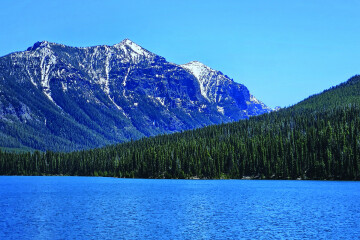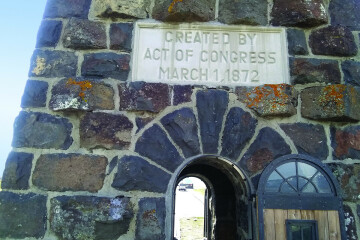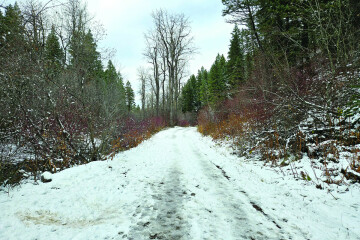Been There, Done That Got The Hat
The saying, “Been there, done that, got the t-shirt” mildly pokes fun at people who did stuff and, even before they could brag about it you knew about their exploits, because their t-shirt advertised it. They had been to parks, climbed mountains, bought gear to fish famous streams… I was never much of a t-shirt guy.
The other day, my wife and I were prepping for some wall painting. I had to remove a rack which was full of hats, then a shelf high up in the closet full of old hats. The hats all ended up in a pile on my desk; I walked by a few times gazing fondly at them. It seems that I am a hat guy. No, I am definitely a hat guy. That is probably different than a t-shirt guy. Actually, no. I can find no separation between the two. They are exactly the same. There is a story behind every one of my hats, and I remember all of them.
A brief history of hats: when white men first came to Montana, they fought with the Natives, made a hell of a mess, and trapped beaver. The beaver were made into hats for guys in London and Paris. Then the hats were made from silk, but that was okay; the beaver were all gone, anyway. Men continued to wear hats until JFK was president. He did not wear hats, so all the other guys quit wearing them. Later, in the 70s and 80s, guys started to wear hats again, but mostly the ones like baseball players. That’s about it.
The first hat I wore regularly said ‘Case Equipment.’ It was orange. I think implement companies gave the hats to farmers and ranchers as promotions. In the west there were a lot of King Ropes hats from Sheridan, Wyoming. They were pretty cool but had nothing to do with cows, horses or ropes, I did not feel that wearing one was appropriate. I did have a relationship with beer, and working in that business gave me access to as many hats as I wanted.
But most of the hats in the pile on the desk were acquired in that ‘been there, done that’ tradition; generally, from National Parks and towns. An important tip is to not wear the hat in the location where it was purchased. Nothing screams Clueless Tourist more than someone walking around Old Faithful snapping selfies in a Yellowstone Park hat. It is better to buy more specific hats at general places. A Jenny Lake hat in the Tetons, or better yet, a Jackson Hole Mountain Guides one. My favorite Yellowstone hat was lost in a kayaking mishap. But the whirlpool I could not seem to avoid was on the Yellowstone River south of Livingston, so that was appropriate.
Thus, I wear my Apache Junction, Arizona hat in Montana, and my Glacier Park hat while in the southwest. This provides a certain man-of-the-world savoir faire, a casual attitude which nonetheless speaks of a well thought out style. That reminds me — when we traveled to France, I was in a quandary. I surmised that a ballcap would identify me as the person everyone already knew I was; an American dude. Unable to decide, I wore no headcover. Then I noticed that most Frenchmen did not wear hats, even if bald. Some did wear sporty fedoras. A few berets. Many wore scarves. I did not go that far. Wow. I just used the phrase savoir faire to describe ballcap-wearing Americans. Apologies to all the gentlemen of Paris for that faux pas.
I try to call myself a minimalist, with the exceptions of books and hats. My son Chris brings this crashing down around me. He wears one hat. Living in Seattle for years, he became a dedicated Mariners fan. He sports their colors and sticks to that same hat, even though he now resides in New Zealand. The drawback to this exclusivity is that a single lid wears out, becomes raggedy. He has to hang the hat in the mudroom; it is not allowed in the house. Well, he may not have a mudroom. I know, he had to build a mudroom to hang the hat. That makes for a better story. When he made a trip to the U.S., I was privileged to accompany him to an MLB shop in a mall in L.A., where he purchased a replacement. Same hat, same brand. Continuity is important.
A hat can become an heirloom. Many years before I formulated the ‘location rules’ of hat-wearing, I bought a hat in the Tetons and wore it on all my hikes there. Later, I passed it to Chris and he did the same by gifting it to his brother, Scott. It ultimately lost its role in family hiking and became a painting hat. A few years ago, Scott returned it to me. It had become unwearable, the brim about to detach. It is still in residence; we are unable to decide on its fate.
Another favorite is a hat my sister bought for me on my birthday while we were beachcombing in California in a place we had been returning to for many years. My Redondo Beach hat is always appropriate.
There are trucker hats which have a mesh back and a fairly high crown. There are Dad hats which feature a flat crown and a long bill. There are flat-brimmed hats. Scott wears these—I must ask him if they have a specific name. I believe they originated with rap artists or ballplayers from the Dominican Republic. He gifted me one, though I have not sported it around town yet.
Hats fade in color with time, which is very cool. But hats wear out, usually by becoming frayed on the brim. You can actually buy them already frayed, kind of like the jeans with pre-torn holes. The style and logic of this is way beyond me.
My best friend used to live in Wolf Creek, Montana. We camped, hunted, and visited on his land there for many years. I bought a hat at the Conoco just off the interstate, and wore it constantly. When it frayed out, I drove up there and bought a new one. He gave me a hat which I will never wear, but am proud to own. He was a smokejumper and picked up the hat at a reunion. Likewise, I would never wear my brother-in-law’s Marine Corps hat. I have been neither a Marine nor a smokejumper. Yet, I do wear a hat purchased for me at a surf shop in Bali. I have never been to Bali but I have been on a surfboard, if only momentarily.
I have a few sports hats. Bought a Green Bay Packer hat at the gift shop at Lambeau Field. My niece sent me an L.A. Dodgers hat after they won the World Series in 2020. I wear these during the appropriate seasons. I wear my MSU hats often, and the Bobcats have no geographic restrictions.
Last summer we were camping at Ketchum, Idaho. I bought a Sun Valley hat on sale for ten bucks. When I returned to Bozeman, more than one person thought that maybe I was a millionaire from that exclusive resort. Which brings up the cost. That seemed to be the going price for hats for many years – ten bucks. Then (and still, at times) $19.99. More common anymore is $24.95. When I replaced the hat that was lost in the river, I paid more than that; it was simply necessary.
When to wear a hat is a personal matter. Fresh from a morning shower with a clean head and hair does not seem like the proper time. But I spend a lot of time outdoors and have been told that I have a bald spot somewhere on the back of my head. I don’t need to see this; it can remain a myth to me. Still, the precaution of a covering is not a bad idea. I do know that I have big, floppy ears. I own a couple of bucket hats but, so far, do not like the look. So I stick with traditional ballcaps and paint my ears white with sunscreen. That may be a more bizarre look than the buckets, but so far...




